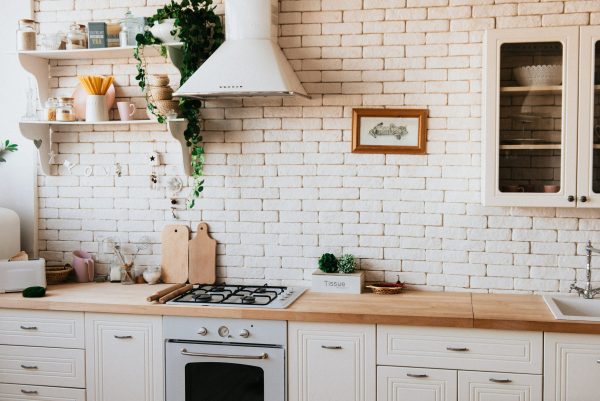29.06.22
HMO Space Standards for Bedrooms and Communal Areas

UK law classes certain types of student accommodation as houses of multiple occupation (HMO). In short, unless you’re a landlord looking to let a single room to a single person, then you might be letting an HMO. And if you’re letting an HMO, then you need to meet certain standards when it comes to the size of certain spaces in the house, including the bedrooms and the communal areas.
As trusted partners for student accommodation lettings and management, we’re here to help landlords like you make sure that every room in your student property meets the regulations.
What is an HMO?
An HMO (a house in multiple occupation) is a property rented out by at least 3 people who are not from 1 ‘household’ (for example a family) but share facilities like the bathroom and kitchen. It’s sometimes called a ‘house share.
You can read a detailed explanation of what counts as an HMO by reading section 254 of the government’s Housing Act 2004.
One definition the Act gives is that a building is an HMO if it consists of “one or more units of living accommodation not consisting of a self-contained flat or flats.”
This means that many types of student accommodation count as HMOs. You should, however, refer to your local authority to ascertain the planning restrictions within any given area as this varies from location to location.
For Nottingham, give strong consideration to the Article 4 direction, which came into play in Nottingham in 2012. For more information head here.
Minimal HMO Standards
These are the legal minimum guidelines. By law, any HMO must have certain facilities, and they must meet certain standards. These standards are set by your local council or authority. In this post, we’ll use the figures set by Nottingham City Council, which you can access here.
The figures might be slightly different in your area, so be sure to check your local council’s regulations.
HMO Bathroom Requirements
If the living accommodation in an HMO does not contain bathing and toilet facilities for the exclusive use of each individual household, then you must provide an adequate number of bathrooms, toilets, and sinks suitable for personal washing.
The minimum number of each facility depends on the number of occupants in your HMO:
| Number of Occupiers | 4 or fewer | 5 | 6-8 | 9-10 | 11-12 | 13-15 |
| Basins | 1 | 2 | 2 | 3 | 3 | 4 |
| Toilets | 1 | 1 | 2 | 2 | 3 | 3 |
| Baths or Showers | 1 | 1 | 2 | 2 | 3 | 3 |
If you have 16 or more occupants in your HMO, you’re advised to contact the council’s HMO team to discuss.
The law also states that, if 5 people share a single toilet and one bath and shower, then the toilet should be in its own compartment. If 9 or 10 people share two toilets and two baths or showers, at least one of the toilets should be in a separate compartment. Finally, if 13, 14 or 15 people share three toilets and three baths or showers, at least two of the toilets must be in separate compartments.
Local councils and authorities may have slight variations of these standards. For Nottingham City Council’s rules, see the HMO Amenity Guidance for Bathing and Toilet Facilities.
HMO Space Standards – Bathrooms
Whether the bathrooms in your HMO are for shared or exclusive use, government legislation outlines the following minimal standards:
- The bathrooms should be secure, private, and ideally located on the same floor as the sleeping accommodation.
- Baths should be readily accessible. The minimum dimension for a bath is 1,700 x 760 mm.
- Showers should be readily accessible. They must be screened and enclosed. The minimum dimensions for a shower is 800 x 800 mm, though the room containing the shower must also be big enough to allow the occupant to dry-off and change their clothes.
- All facilities – baths, showers, and sinks – must include adequate splashbacks. For baths and sinks these must be at least 300 mm, though they must cover the full height of showers. All facilities must also include adequate waterproof seals.
- If a room contains a toilet, then it may only open onto a room where food is prepared so long as it also has a mechanical extractor fan and a sink.
HMO Space Standards for Kitchens
Here are the minimum standards for a shared HMO with no cooking facilities in the bedrooms.
These can get quite complicated, so we recommend finding out more from Nottingham City Council, or your local council’s guidelines.
For example, Nottingham City Council consider the following when assessing your kitchen’s suitability:
- Cookers (with a minimum of a 4 ring hob)
- Sinks and drainers
- Fridge freezers (with a minimum capacity of 150 litres for the fridge and 70 litres for the freezer)
- Worktop length and depth
- Electric socks
- Wall and base units
For example, if you have over 6 occupants, the number of cookers you need increases from 1 to 2, or 1 cooker and a combination microwave oven and grill, as do the number of fridge freezers and washing up facilities. It should also be noted that with every additional occupant, your worktop length minimum requirements increases.
For the specific requirements and please see the details set out by Nottingham City Council which you can access here.
On top of this, you need to ensure the following:
- All the equipment you provide in the kitchen must be fit for purpose. The kitchen should have a size and layout that makes it possible for all HMO occupants to safely and adequately store, prepare and cook food.
- All kitchens must be suitably located in relation to your property’s living accommodation. At the same time, any shared dining space you provide should be so located as to allow occupants to carry food from the kitchen without having to climb any stairs.
- There must be a ratio of 1 set of amenities for every 5 occupants using the shared amenity, or part of the shared amenity.
- If you provide a combination microwave oven and grill, it must have a minimum capacity of 27 litres.
- Any dishwasher you provide must be floor mounted, and at minimum you should provide the “slimline” size.
- You can provide a double oven instead of a combination microwave oven and grill, so long as each oven compartment is of a similar size.
- Every kitchen area in your HMO must have mechanical extraction capable of a minimum extraction rate of 30 litres per second. This cannot be a re-circulating extractor – if must be ducted to the outside of the property.
- For every 5 occupants in your HMO you must provide a 30 litre refuse container.
- If you provide more than one set of hobs, you must ensure there’s a minimum of 500mm of worktop between them.
- You must provide a fire blanket, and it must be placed close to the cookers and hobs. If you have a large shared kitchen with multiple cookers and hobs, you must provide multiple fire blankets.
- Where possible, you must fit a fire door to your kitchen. It must have an overhead self-closer and luminous strips, so it can be located in the event of a power cut.
- You cannot count sockets for washing machines, refrigerators and cookers among the double sockets you’re required to provide.
- Each sink you provide in the kitchen must have a bowl and a drainer with a hot and cold water supply.
- You cannot count the storage space under the sink among your minimum food storage requirements.
Exclusive-Use Kitchens
There are separate regulations for kitchen facilities that are only used by individual households within an HMO, when there are no other shared facilities for that household. For example, if you’re including cooking facilities within an occupant’s room, these are the minimum standards to meet:
- Cooker: At least 2 hob rings, 1 grill and 1 oven per one person household. 4 hob rings and 1 grill and 1 oven for households of 2 or more people.
- Sink: A bowl and drainer with cold water and a constant supply of hot water.
- Worktop: Minimum depth of 500mm and minimum length of 1 metre for one person. The guidance says you should “increase proportionally” for larger households.
- Electrical sockets over worktop: 2 double sockets, not including those needed for fridge, washing machine, cooker, and so on.
- Dry food storage: For one person, you must provide a double wall unit or a single base unit. Again, you’re advised to “increase proportionally” for larger households. You may not count under sink storage as dry food storage.
- Fridge with freezer compartment: At least 90 litres fridge capacity with “standard size” freezer compartment.
Beyond this there are similar stipulations concerning exclusive-use kitchens as there are for shared kitchens. The kitchen must be fit for purpose, conveniently located, and adequately ventilated.
HMO Space Standards – Bedroom Sizes
For the sort of shared accommodation typically found in a student accommodation, the minimum bedroom sizes are as follows:
| Room Type | Minimum Size |
| Bedroom/study for one occupant, with no separate living room | 10 m² |
| Bedroom/study for two occupants, with no separate living room | 15 m² |
| Bedroom/study for three occupants, with no separate living room | 20 m² |
| Bedroom/study for four occupants, with no separate living room | 25 m² |
| Bedroom for one occupant, with a separate living area in the house | 8 m² |
| Bedroom for two occupants, with a separate living area in the house | 12 m² |
| Bedroom for three occupants, with a separate living area in the house | 17 m² |
| Bedroom for three occupants, with a separate living area in the house | 22 m² |
| Bedroom with cooking facilities for one occupant | 14 m² |
| Bedroom with cooking facilities for two occupants | 18 m² |
| Bedroom with cooking facilities for three occupants | 23 m² |
Shared Dining Space Size Standards
If you’re providing dining space in a separate room, for the minimum size allow 2 m² for every person who’ll be using the space. You can exclude any occupants with their own exclusive dining space from the calculation.
The dining space must be suitably located so that nobody has to use any stairs when carrying food from the kitchen.
Shared Kitchen Space Size Standards
The minimum size for a shared kitchen that’ll be used by up to 5 occupants is 7 m². For every person beyond this that’ll use the facilities add 2 m² to the shared space.
HMO Space Standards – Does Your Student Accommodation Make the Grade?
All of these minimal requirements are there for a reason – to ensure that all accommodation in the UK is safe and suitable for human habitation.
Though it can be a challenge for landlords to ensure their accommodation meets the legal requirements. So as part of our ongoing service to landlords, we’ll organise all certifications for your property.
Work with us, and we’ll help you make sure that every room in your student property meets the regulations. After this, we’ll conduct all viewings and screenings, helping you to fill your properties with student tenants you can depend on. And on an ongoing basis, we’ll take care of any maintenance issues you might have in your properties.
Compliance sorted and zero hassle, you can trust us with your property. Head here for more information on how we can help landlords in Nottingham.
News & Blog
Keep up to date with the latest news from UNI2 Rent.

WHAT ARE MY RESPONSIBILITIES AS A STUDENT LANDLORD OR LANDLADY?
Read MoreHOW TO MAKE MY TO-LET PROPERTY ATTRACTIVE TO UNIVERSITY STUDENTS
Read More
WHERE TO LIVE IN NOTTINGHAM: A STUDENT GUIDE
Read More






